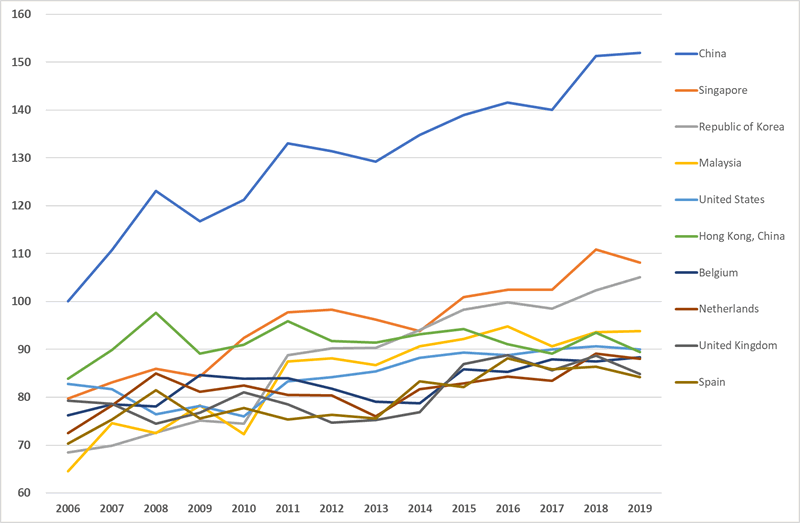UK-based maritime and freight transport consultancy MDS Transmodal announced the launch of its Port Liner Shipping Connectivity Index (Port LSCI) web application, developed jointly with UNCTAD, which allows subscribers to understand the factors that affect a port’s rating on the index.
UNCTAD published its Port Liner Shipping Connectivity Index (Port LSCI) for 2019 in July, presenting countries that have improved or worsened their positions in maritime transport networks.
The index identified Shanghai as the world’s best-connected container port, with Singapore in second place and Ningbo a third place in the Port Liner Shipping Connectivity Index.
Five of the top 10 best connected economies in 2019 are in Asia, with Singapore, Korea, Hong Kong (China), and Malaysia rounding out the top-five list, according to the index’s metrics.
At the other end of the table, small islands developing states (SIDS) have hardly seen any improvement, meaning trade in shipped goods remains problematic in those countries, with knock-on economic effects.
The Port LSCI describes the relative container shipping connectivity of each port compared to Hong Kong in 2006 Q3, which was the best-connected port at the time, but is now only 5th in the global league table with an index of 101. The port reported its lowest ranking in 40 years in 2018.
Shanghai, with an index of 132 in Q3 2019, has improved its connectivity in the last year, while Singapore’s has fallen slightly to 123 due to a decline in the number of services and the number of lines serving the port and despite an increase in the total deployed capacity and an increase in the vessel size.

In Europe, Rotterdam is at the top of the European and Mediterranean container shipping connectivity league, with its Port LSCI improving from 90 to 92 over the last twelve months.
By contrast, Belgium’s Antwerp lost the top spot after its index fell from 91 to 90.
Some of the Mediterranean ports, such as Barcelona, Valencia, Tanger Med and Piraeus, saw their indices rise in the last year with the deployment of additional capacity on the Far East-Mediterranean trade lane.






























































